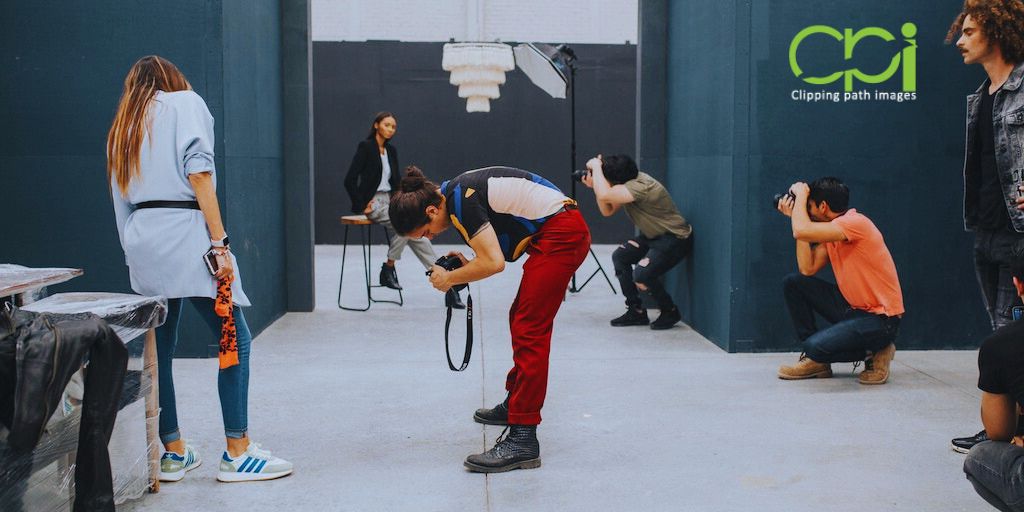
What is Portrait photography? It’s a captivating form of art that seeks to reveal the personality, mood, and identity of the subject. It’s a broad genre that can span various styles, including traditional, environmental, candid, glamor, lifestyle, abstract, and creative portraiture.
In traditional portraiture, the focus is on the person’s face, typically with a formal and posed presentation. Environmental portraiture, on the other hand, places the subject within their surroundings, offering context about their life or interests. Candid portraiture captures spontaneous and unposed moments, while glamor and lifestyle portraiture aim to portray the subject in a desirable light or in everyday situations, respectively.
Lighting plays a crucial role in portrait photography, dramatically affecting the mood and appearance of the subject. Natural light and artificial light, such as flash and studio lights, are both utilized depending on the photographer’s intended effect. The use of different lenses and shooting techniques can also greatly influence the final outcome.
Beyond the technical aspects, a competent portrait photographer needs excellent interpersonal skills to establish rapport with the subject. This connection can help bring out the subject’s authentic personality and emotions, which are essential in creating impactful and memorable portraits.
Ultimately, the power of portrait photography lies in its ability to tell compelling stories about its subjects, making it a favorite genre among photographers and viewers alike.
What Does A Portrait Photographer Do?
A portrait photographer is a professional who captures individuals or groups’ personalities, moods, and identities through various techniques. They set up the right environment, such as location, lighting, and angles, to capture the subject’s unique character and emotions.

They also create a comfortable atmosphere for their subjects by engaging them in conversation and providing direction. They understand clients’ needs and expectations, tailoring their approach accordingly. Post-shoot, they select the best images and edit them using software tools. As self-employed photographers, they manage business operations, including marketing, appointment scheduling, and financial matters.
What Makes A Photo A Portrait?
A photo is considered a portrait when it primarily focuses on capturing an individual or group’s personality, character, and mood. While portraits often concentrate on the subject’s face, they can also include the body and the environment to provide context.
Essential elements of a portrait photo include lighting, composition, and the subject’s pose or expression.

The goal of a portrait is to convey something about the person or people being photographed, whether it’s a personal trait, a shared emotion, or a specific moment in their life. Ultimately, a portrait tells a story about the subject
Why Is Portrait Photography Important?

Portrait photography holds immense significance for several compelling reasons:
Capturing Memories: Portrait photography immortalizes moments in time, preserving memories for generations. Whether it’s a family portrait or an individual photo, these images become cherished keepsakes.
Expressing Individuality: Portraits provide a powerful means of self-expression. They capture the uniqueness of individuals, showcasing personalities, emotions, and the essence of who they are.
Documenting Milestones: From graduations and weddings to birthdays and anniversaries, portrait photography documents significant milestones in people’s lives, creating a visual timeline of personal journeys.
Building Personal and Professional Identities: In the professional realm, portraits are essential for building personal brands. Headshots, corporate portraits, and professional profiles contribute to a person’s identity and professional image.
Fostering Connection and Empathy: Well-crafted portraits have the ability to evoke emotions and foster connections. They allow viewers to empathize with the subjects, creating a sense of intimacy and understanding.
Preserving Family Heritage: Family portraits serve as a visual legacy, connecting past, present, and future generations. They become a part of a family’s history, telling stories across the ages.
Celebrating Relationships: Couples, families, and friends often commission portraits to celebrate relationships. These images capture the bonds between individuals, freezing moments of love, companionship, and shared experiences.
Boosting Self-Esteem: Professionally taken portraits can boost self-esteem and confidence. Seeing oneself in a well-crafted image can instill a sense of pride and empowerment.
Artistic Expression: Portrait photography is a form of artistic expression, allowing photographers to play with light, composition, and mood to create visually stunning and emotionally resonant images.
Social and Professional Profiles: In the age of social media and online presence, portraits are integral for social and professional profiles. A strong, well-presented image can make a lasting impression.
Portrait photography goes beyond merely capturing faces; it encapsulates the essence of what it means to be human.
Why Do We Need Portrait Photography?
Portrait photography captures significant moments, expresses individuality, enhances professional branding, allows artistic expression, and documents cultural trends, serving as a valuable personal and societal historical record.
Personal Documentation: Portrait photography helps capture and preserve significant moments and phases of our lives, serving as a personal historical record.
Expressing Individuality: Portraits can highlight the unique personality and character of the subjects, providing a means of self-expression.
Professional Branding: High-quality portraits are essential for creating a professional image on corporate profiles, resumes, and social media, helping to enhance career opportunities.
Artistic Expression: Portrait photography is an avenue for creative and artistic expression, allowing photographers to explore various styles and techniques.
Cultural Documentation: Portraits can capture and reflect cultural trends and societal attitudes, serving as a visual record of specific times and places.
Different Types Of Portrait Photography
Portrait photography, a diverse field, captures subjects in various styles and contexts. From traditional and environmental to conceptual and self-portraits, each type conveys different facets of personality, emotion, and narrative, reflecting the subject’s unique story. Here are some types of Portrait Photography:
Traditional Portrait:
This classic form of portraiture captures the face and expression of the subject. Traditional portraits are typically posed and formal, often shot against a plain or unobtrusive background. The emphasis is on the subject, their facial features, and their personality or mood. The goal is to present the subject in the most flattering manner possible, with careful attention to lighting, composition, and focus.
Environmental Portrait:
Environmental portraiture situates the subjects within their natural environment, whether it’s their home, workplace, or a location that speaks to their hobbies or interests. The environment provides a rich context, adding depth to the subject’s story and helping to reveal their character and lifestyle.
Candid Portrait:
In contrast to posed portraits, candid portraiture captures people in the midst of their everyday lives, unposed and often unaware of the camera. The aim is to seize spontaneous moments and genuine emotions, creating a natural and authentic representation of the subject.
Lifestyle Portrait:
Lifestyle portraiture aims to depict real-life situations in a more controlled and stylized manner. It focuses on the story of the subject’s life or a particular lifestyle, often shot in natural settings like homes or outdoor locations, with the use of natural light.
Glamor or Fashion Portrait:
Glamor and fashion portraiture are about creating visually appealing images that highlight beauty, style, and elegance. It often involves professional models, elaborate wardrobes, and dramatic makeup and lighting. The photographs are typically used for commercial purposes, such as advertising and fashion editorials.
Surreal Portrait:
Surreal portraiture combines photography with artistic creativity to create dream-like, fantastical images. It often involves the use of digital manipulation, props, costumes, or unique settings to create images that go beyond the bounds of reality, sparking intrigue and imagination.
Conceptual Portrait:
Conceptual portraits are designed to convey a specific idea, message, or story. Every element in the photograph, from the subject and props to the lighting and composition, is carefully planned and arranged to communicate the intended concept. These portraits are often symbolic and thought-provoking.
Corporate Portrait:
Also known as business portraits, these are formal and professional images used for corporate profiles, resumes, professional networking sites, and company publications. They aim to present the subject as competent, professional, and approachable.
Family Portrait:
Family portraiture involves capturing family members together. These portraits mark milestones, occasions, or simply the everyday life of the family. They can range from formal, posed photos in a studio to relaxed, candid shots in a familiar setting.
Self-portrait:
Self-portraits are pictures of people taken by themselves. They provide a means for photographers to express their feelings, ideas, or identities from their personal perspective. This form of portraiture allows for a high degree of creative control and self-exploration.
Portrait Photography Tips & Tricks
Portrait photography is a form of art that focuses on capturing the personality and emotion of a subject. Here are some tips and tricks to help you improve your portrait photography skills:
Connect with Your Subject: Understand their comfort level and personality to capture their authentic selves.
Master Lighting: Use natural light when possible, or experiment with artificial lighting.
Compose Thoughtfully: Use composition techniques to draw attention to your subject, ensuring a clean, complementary background.
Experiment with Angles: Change your perspective to add interest to your portraits.
Guide Posing: Encourage natural and comfortable poses.
Use the Right Lens: Prime lenses, like 50mm or 85mm, are ideal for portraits.
Post-Processing: Enhance your images subtly using editing software.
Practice and Learn: Keep experimenting, learning, and adapting to improve your skills.
Remember, the key to great portrait photography is not just technical proficiency, but also your ability to connect with your subject and bring out their unique personality and emotion.
Post Processing Services for Portrait Photographers
Post-processing services for portrait photographers are an essential part of the photography workflow. They offer a range of specialized solutions to enhance raw images and bring the photographer’s vision to life.
Retouching Services:
The most common service, retouching, includes removing skin blemishes, wrinkles, stray hairs, and other unwanted elements. It can also involve enhancing facial features, whitening teeth, and brightening eyes. The goal is to subtly enhance the subject’s appearance, maintaining a natural look.
Color Correction:
This service ensures consistency and accuracy in color tones across images. It includes adjusting white balance, saturation, contrast, and exposure. Color correction can drastically improve the mood and aesthetic appeal of a portrait.
Background Editing:
Background distractions can detract from the subject. Service providers can alter the background, remove unwanted objects, or even replace it entirely.
Advanced Manipulation:
For high-concept or surreal portraits, advanced manipulation services can help bring creative ideas to life. This could involve compositing multiple images, adding special effects, or creating fantasy landscapes.
Image Restoration:
If you’re working with old or damaged photographs, restoration services can help bring them back to life. This can be particularly useful for family portraits and historical images.
Batch Processing:
If you have a large number of images that need similar edits, batch processing can save time. This is especially useful for event or school photographers.
Many photographers outsource these services due to the time and expertise required for high-quality editing. It allows photographers to focus more on shooting and less on the often time-consuming process of editing.
When choosing a post-processing service, it’s essential to consider their expertise, turnaround time, pricing, and the possibility of a personalized approach to your style. Remember, the goal of post-processing is to enhance the image while preserving the integrity of your original vision.
Final Words
Portrait photography is a powerful medium that captures the essence and personality of a subject. It goes beyond just snapping a picture of a person; it’s about telling a story, capturing a mood, and expressing the uniqueness of the individual.
Whether it’s shot in a studio with professional lighting or in a natural setting, each portrait holds the potential to reveal something new and profound about the subject. The art of portrait photography requires technical proficiency, artistic vision, and an ability to connect with the subject, making it a truly engaging and rewarding form of photography.

